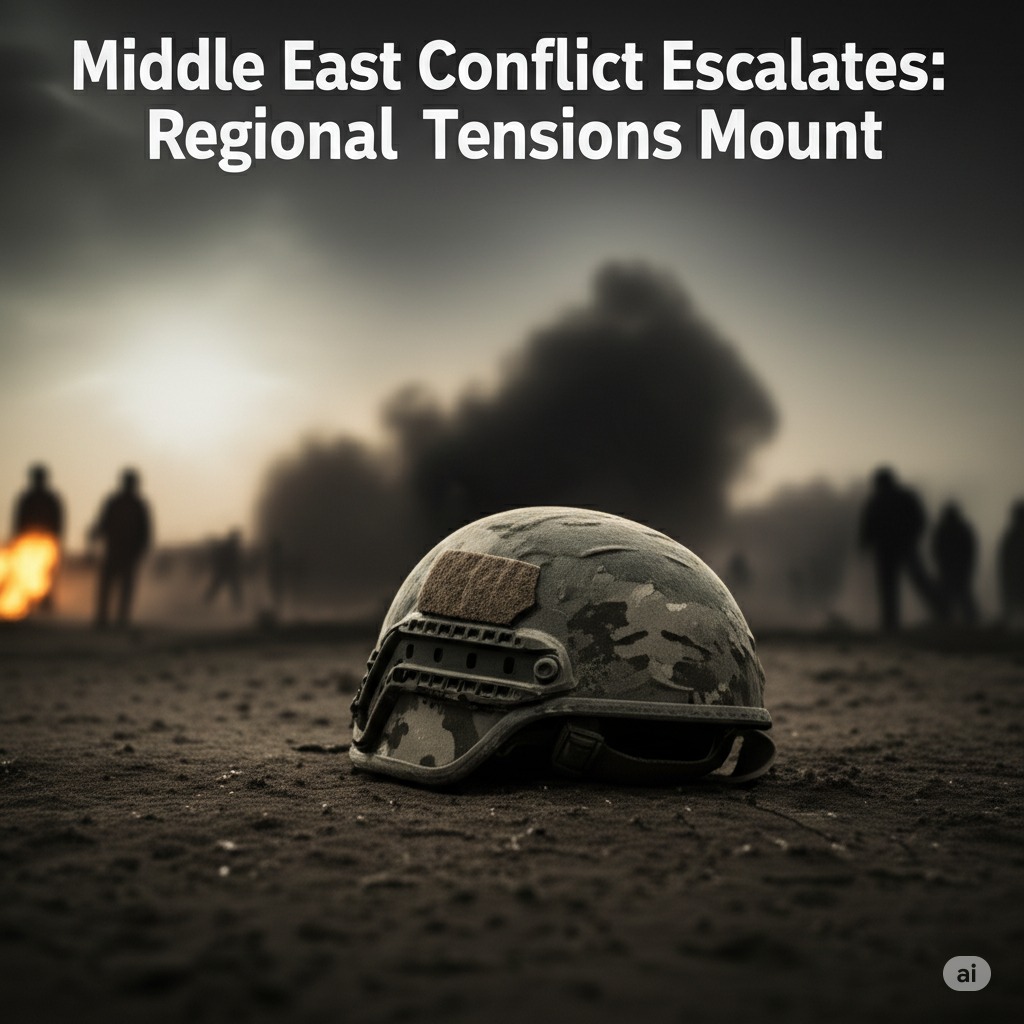Middle East Conflict Escalates: Regional Tensions Mount
Published on June 6, 2024 | Generated by AI
 🤖 AI-generated Image
🤖 AI-generated Image
Why It Matters
The Middle East is currently experiencing a significant escalation in long-standing conflicts, drawing in a complex web of state and non-state actors. This period of heightened tension is marked by increased hostilities, proxy confrontations, and a palpable risk of wider regional conflict. Key actors include Israel, Hamas, Hezbollah, Iranian-backed militias, and global powers like the United States and Iran, whose strategic interests intersect and often clash across the region. The urgency stems from the potential for miscalculation or incident to trigger a cascade of events with severe humanitarian, political, and economic consequences globally. What's at stake is the stability of a critical geopolitical region, global energy supplies, and the potential for devastating human cost.
Background & Timeline
The current escalation builds upon decades of unresolved conflicts and geopolitical rivalries in the Middle East. A significant inflection point occurred in October 2023, following attacks originating from Gaza that led to a large-scale military operation by Israel. This ignited dormant fronts and intensified existing proxy conflicts. Tensions along the Israel-Lebanon border surged with increased exchanges involving Hezbollah. Concurrently, groups operating in Iraq and Syria, often linked to Iran, have targeted US forces, while Houthi forces in Yemen have conducted attacks on international shipping in the Red Sea, ostensibly in solidarity with Palestinians in Gaza. These interconnected theaters of conflict reflect a broader regional power struggle, exacerbated by historical grievances, territorial disputes, and the involvement of external state actors supporting various factions.
What’s Happening Now
- June 6: Reports indicate continued cross-border shelling and drone activity along the Lebanon-Israel frontier, resulting in casualties on both sides.
- June 5: Maritime security reports highlight ongoing threats to commercial vessels in the Red Sea, attributed to Houthi forces, impacting global shipping routes.
- June 4: Diplomatic efforts intensified with regional powers discussing ceasefire possibilities and humanitarian aid access, particularly concerning the situation in Gaza, amidst ongoing Israeli military operations.
- June 3: Concerns rise over the potential for escalation in Iraq and Syria following recent exchanges involving Iranian-backed militias and US forces in the region.
What Could Happen Next
-
1. De-escalation through Diplomacy – Reason: Intense international pressure and regional mediation efforts could lead to ceasefires and a return to negotiations. Expected consequences: A potential reduction in immediate hostilities, increased humanitarian access, but likely no resolution to underlying political issues. Drivers: Fear of wider war, economic costs, internal political pressures. Risks: Fragile agreements easily broken, continued low-level conflict. Probability: Moderate, dependent on sustained international commitment.
2. Protracted, Localized Conflict – Reason: None of the key actors achieve decisive victory, leading to ongoing, contained hostilities in specific theaters (e.g., Gaza, Lebanon border, Red Sea). Drivers: Lack of political will for compromise, entrenched positions, continued proxy support from external powers. Risks: Constant humanitarian crisis, unpredictable flare-ups, long-term instability. Probability: High, reflects the current trajectory.
3. Wider Regional War – Reason: A significant incident or miscalculation triggers direct confrontation between major state actors (e.g., Israel and Iran or their primary proxies beyond current levels). Drivers: Failure of de-escalation, deliberate provocation, accidental clash. Risks: Catastrophic human toll, massive displacement, severe global economic disruption, potential involvement of global powers. Probability: Low to Moderate, actors are aware of the high costs but the risk remains significant given current tensions.
This article is generated using AI-assisted summaries and verified timelines.
